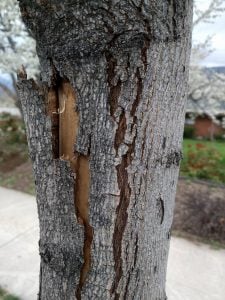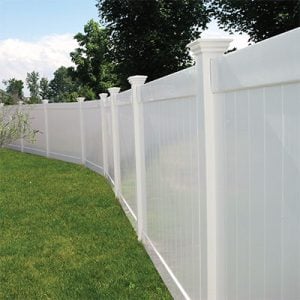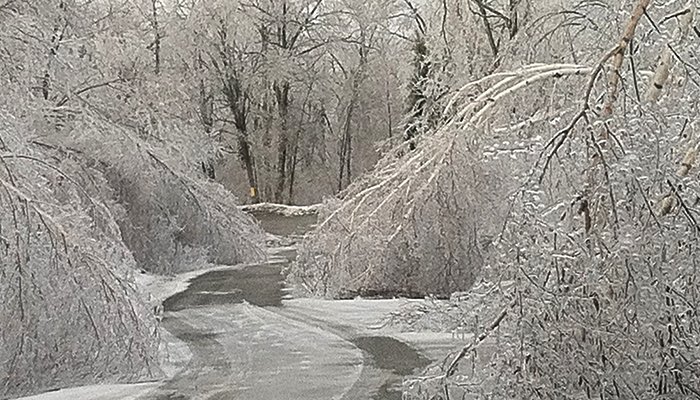Winter is a harsh month, and unlike animals who can hibernate or find shelter for warmth and protection, your trees are left out to bare it all (while being bare!). Since they have little protection against the elements, as you can image, winter does take a toll on them. While, most are adapted enough to survive it, they will undergo stress. Here are some common tree problems you may see this winter.
- Freezing Damage –
Freezing damage is one of the common tree problems that can occur due to extreme temperature changes and can result in cracks in the tree’s bark and/or inner wood. Additionally, another tree problem in relation to cold damage is its effect on late growth. If a tree grows later in the season, it is extremely vulnerable to damage because it does not have enough time to prepare for early frost. Applying anti-wilting application to plants (especially delicate ones) can go a long way in preventing wilting associated with frost stress.
- Winter Drought –
Did you even know winter drought was a thing? Well, unfortunately it is. Since a tree is essentially already starving for nutrients in winter, the dry cold air of winter can lead to a tree losing more water then it can absorb through the frozen ground.
- Frost Heaving –
Frost heave occurs when freezing temperatures penetrate the ground and cause subsurface water to form ice structures. The freezing below the surface creates expansion that displaces soil and pushes the ground upward. This freezing below ground also further contributes to the drying out of soil. Since a tree’s roots are underground, this displacement of soil and movement of land can result in weakening and damaging of branches. Weakened and damaged roots can lead to bigger tree problems, like making your tree more susceptible to falls.
- Sunscald –
You may be thinking, “sunscald in winter”? It may sound strange but it actually makes perfect sense and here’s why. When bark it warmed by the sun, it’s tissues become activated. However, in the winter, temperatures fluctuate rapidly. When the sun disappears after being out, warming your tree (in the dead of winter), the abrupt and extreme cold temperatures kill any tissue that may have been previously activated, resulting in sunscald. Sunscald usually presents in the form of deep cracks on the outer bark and inner wood (typically on the south or southwest side of the tree).
- Animal Damage –
As a homeowner, you are probably already familiar with the damages animals can do to your trees and shrubs in winter. The most common culprit of winter tree/shrub damage in mid-upstate NY are deer. Not only do deer damage your shrubs by feasting on them, but they also do great damage to tree bark from antler rubbing during mating season (used to show dominance). Since food is so scarce in winter, deer will begin feeding on a-typical food sources in your yard and can eat up to 6 pounds of plants daily. Some great ways to help lessen deer damage are –
 Fencing your property in – fence should be at least 6-8 feet tall
Fencing your property in – fence should be at least 6-8 feet tall- Wrapping your tree trunks with chicken wire
- Wrapping your shrubs with burlap coverings
- Repellents – This could mean sprays or planting trees/bushes that naturally repel deer (Black Locust, Cedar, False Cypress, Ginkgo, Hackberry, Japanese Maple, Oak Trees, Magnolia Trees, and many more can be classified as “deer-resistant” trees)
While the harshness of winter cannot be prevented, and some winter cleanup and damage control come spring is inevitable, there are some things you can be doing around your yard prior to winter to prepare and protect it. By being proactive in your yard, you can help protect your trees and avoid some of these common tree problems. Please visit some of our winter blogs below for more on this.
Related Winter Articles:
Winter Trees: How Do They Survive?
Preparing And Caring For Trees In Winter
Important Tips To Prepare Your Yard For Winter
Winter Prep: Inspection, Tree Removal, Stump Grinding
Red Cedar can assist in preparing your yard to help alleviate the effects of winter and ensure that all trees are inspected and stable. It is important to remove dead, dying, or weakened limbs before winter hits, as they will be more susceptible to breakage and falling when the weight of snow and ice is added. Contact us today for your free consultation, and let us ensure that your yard is prepared and safe for the cold and snowy months ahead!


